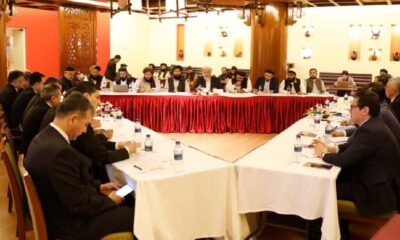Science & Technology
‘Bizarre’ long-legged bird-like dinosaur has scientists enthralled
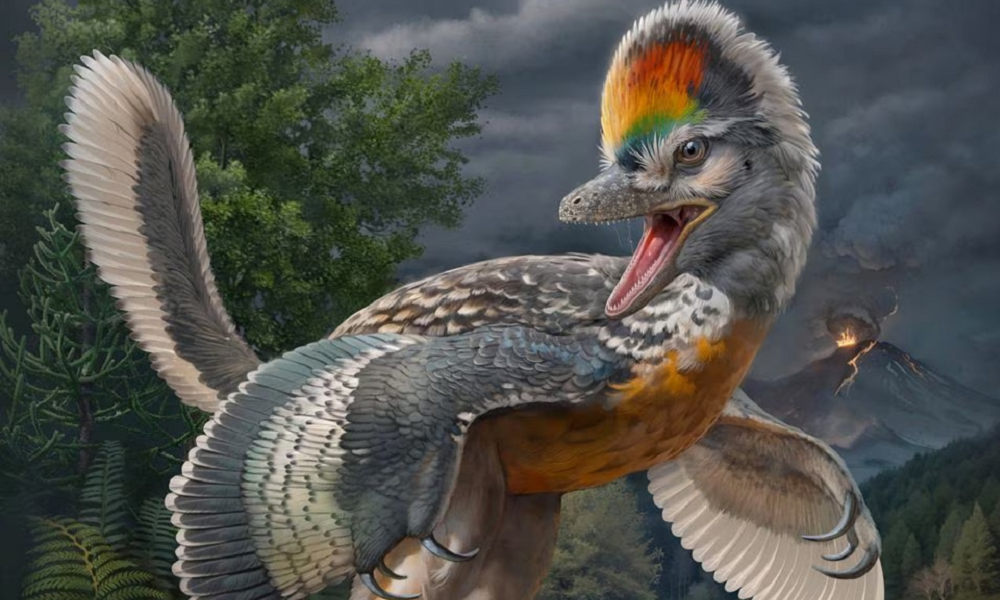
About 148 to 150 million years ago, a strange pheasant-sized and bird-like dinosaur with elongated legs and arms built much like wings inhabited southeastern China, with a puzzling anatomy suggesting it either was a fast runner or lived a lifestyle like a modern wading bird.
Scientists said on Wednesday they have unearthed in Fujian Province the fossil of a Jurassic Period dinosaur they named Fujianvenator prodigiosus – a creature that sheds light on a critical evolutionary stage in the origin of birds, Reuters reported.
The question of whether Fujianvenator, with its curious mixture of skeletal features, should be classified as a bird depends on how one defines a bird, according to study leader Min Wang, a paleontologist at the Institute of Vertebrate Paleontology and Paleoanthropology of the Chinese Academy of Sciences.
Asked for a word to describe Fujianvenator, Wang replied, “I would say ‘bizarre.’ Fujianvenator is far from similar to any modern birds.”
A remarkable event in dinosaur evolution came when small feathered two-legged dinosaurs from a lineage known as theropods gave rise to birds late in the Jurassic, with the oldest-known bird – Archaeopteryx – dating to roughly 150 million years ago in Germany.
Fujianvenator is a member of a grouping called avialans that includes all birds and their closest non-avian dinosaur relatives, Wang said. Despite their modest beginnings, birds survived the asteroid strike 66 million years ago that doomed their non-avian dinosaur comrades.
The Fujianvenator fossil, discovered last October, is fairly complete but lacks the animal’s skull and parts of its feet, making it hard to interpret its diet and lifestyle.
Fujianvenator’s lower leg bone – the tibia – was twice as long as its thigh bone – the femur. Such dimensions are unique among theropods, a group that includes all the meat-eating dinosaurs such as Tyrannosaurus and various others. It also had a long bony tail.
“The forelimb is generally built like a bird’s wing, but with three claws on the fingers, which are absent from modern birds. So you can call it wing. It cannot be determined whether it could fly or not. Based on the skeletal features, Fujianvenator probably is at least not good at flying,” Wang said.
“The fossil itself does not preserve feathers. However, its closest relatives and nearly all the known avialan theropods have feathers, and feathers are widely distributed among dinosaurs. Therefore, it would not be a surprise if Fujianvenator had feathers,” Wang added.
Based on the anatomy of its long legs, the researchers proposed two possible lifestyles – either fast running or wading in a swampy environment much like modern cranes or herons.
“I would put my money on runner,” Wang said.
Scientists are seeking a better understanding of the origin of birds as well as non-avian dinosaurs with bird-like traits.
“To me, Fujianvenator represents another interesting piece of evidence showing the wide distribution of various bird-like dinosaurs living nearly at the same time and sharing similar habitats with their bird descendants,” said paleontologist Zhonghe Zhou of the Institute of Vertebrate Paleontology and Paleoanthropology, a co-author of the study published in the journal Nature.
The earliest chapters in the history of birds remain murky due to the paucity of fossils. After Archaeopteryx – a crow-sized bird with teeth, a long bony tail and no beak whose fossils were first found in the 19th century – there is a canyon of about 20 million years before the next birds appear in the fossil record.
“One thing is for sure. There is still a big gap between the oldest known bird and the second-oldest known birds,” Zhou said.
Science & Technology
Apple loses top phonemaker spot to Samsung as iPhone shipments drop, IDC says
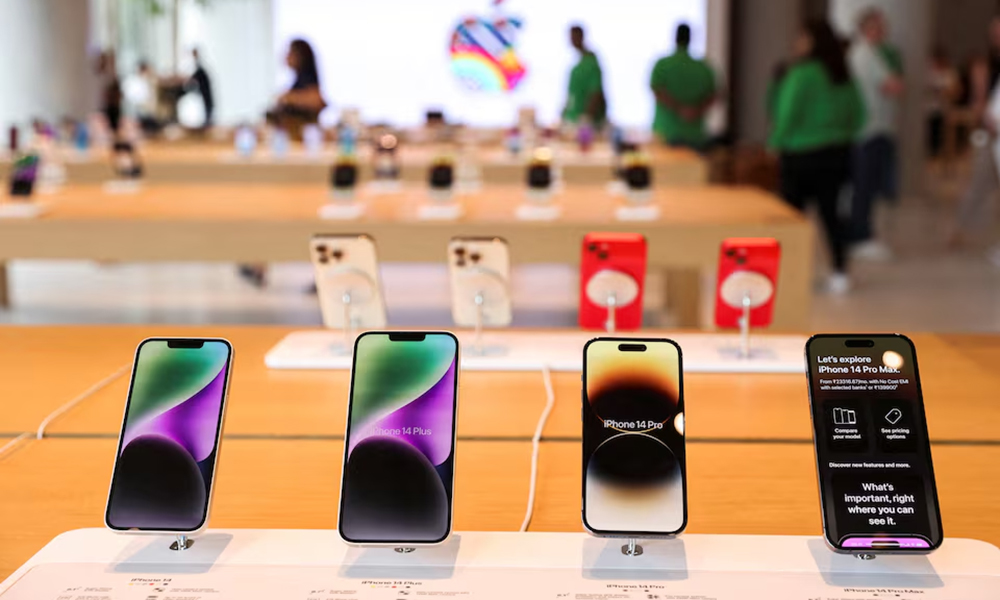
Apple’s (AAPL.O), opens new tab smartphone shipments dropped about 10% in the first quarter of 2024, hurt by intensifying competition by Android smartphone makers aiming for the top spot, data from research firm IDC showed on Sunday.
Global smartphone shipments increased 7.8% to 289.4 million units during January-March, with Samsung (005930.KS), opens new tab, at 20.8% market share, clinching the top phonemaker spot from Apple, Reuters reported.
The iPhone-maker’s steep sales decline comes after its strong performance in the December quarter when it overtook Samsung as the world’s No.1 phone maker. It’s back to the second spot, with 17.3% market share, as Chinese brands such as Huawei gain market share.
Xiaomi, one of China’s top smartphone makers, occupied the third position with a market share of 14.1% during the first quarter, read the report.
South Korea’s Samsung, which launched its latest flagship smartphone lineup – Galaxy S24 series – in the beginning of the year, shipped more than 60 million phones during the period.
Global sales of Galaxy S24 smartphones jumped 8%, compared to last year’s Galaxy S23 series during their first three weeks of availability, data provider Counterpoint previously said.
In the first quarter, Apple shipped 50.1 million iPhones, down from 55.4 million units it shipped same period last year, according to IDC.
Apple’s smartphone shipments in China shrank 2.1% in the final quarter of 2023 from a year earlier.
The drop underscores the challenges facing the U.S. firm in its third biggest market, as some Chinese companies and government agencies limit employees’ use of Apple devices, a measure that mirrors U.S. government restrictions on Chinese apps on security grounds.
The Cupertino, California-based company in June will hold its Worldwide Developers Conference (WWDC), where it will highlight updates to the software powering iPhones, iPads, and other Apple devices.
Investors are closely watching for updates on artificial intelligence development at Apple, which has so far spoken little about incorporating the AI technology into its devices. The company earlier this year lost the crown as the world’s most valuable company to Microsoft (MSFT.O), opens new tab, Reuters reported.
Science & Technology
China launch of relay satellite Queqiao-2 for lunar probe mission successful
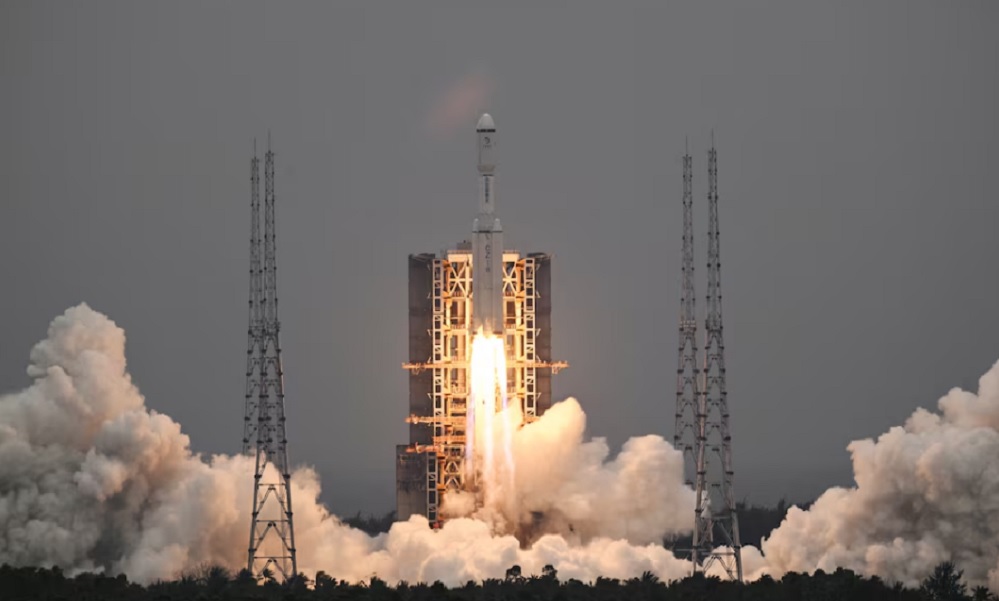
China National Space Administration (CNSA) said on Friday its launch of a key signal relay satellite was a “complete success” and it would serve as the communication bridge for its future lunar probe missions for years to come, state media reported.
China launched the satellite Queqiao-2, which was named after a mythological bridge made of magpies, and two miniature satellites, Tiandu-1 and Tiandu-2, on March 20.
Queqiao-2 will be used as a communications bridge between the ground operations on earth and upcoming lunar probe missions on the far side of the moon until at least 2030.
The moon’s near side always faces earth. That means data transfers from the far side are impossible because there is no direct line of sight.
Queqiao-2 researcher and developer Xiong Liang described the satellite as “the main switch” of the whole fourth phase of lunar missions, according to state television CCTV.
“Only when the main switch is flipped on, all the communications can kick off,” Xiong said.
Queqiao-2 will orbit the moon and relay signals to and from the Chang’e-6 mission, which expected to be launched in May. The robotic Chang’e-6 probe will seek to retrieve samples from an ancient basin, acquiring lunar material from the moon’s hidden side for the first time.
Queqiao-2 will also be used as a relay platform for the Chang’e-7 lunar mission in 2026 and the Chang’e-8 mission in 2028.
The functions and performance of Queqiao-2 met mission requirements and it will be able to provide relay communication services for China’s lunar exploration projects and future lunar missions for China and other countries, said the CNSA, according to CCTV.
Queqiao-2 entered its targeted elliptical orbit on April 2 after a correction midway, near-moon braking and orbital manoeuvre around the moon, CNSA said.
The satellite has successfully communicated with Chang’e 4, which was the first spacecraft to perform a soft landing on the far side of the moon and is still carrying out its exploration mission. It also communicated with the Chang’e-6 probe while it is still on the ground earlier this month.
The successful launch of Queqiao-2 comes after the failed launch of another lunar spacecraft DRO-A/B satellites, which was intended to enter the moon’s distant retrograde orbit (DRO).
China has not released any information on whether or not the satellites can be retrieved.
(Reuters)
Science & Technology
Russia aborts planned test launch of new heavy-lift space rocket
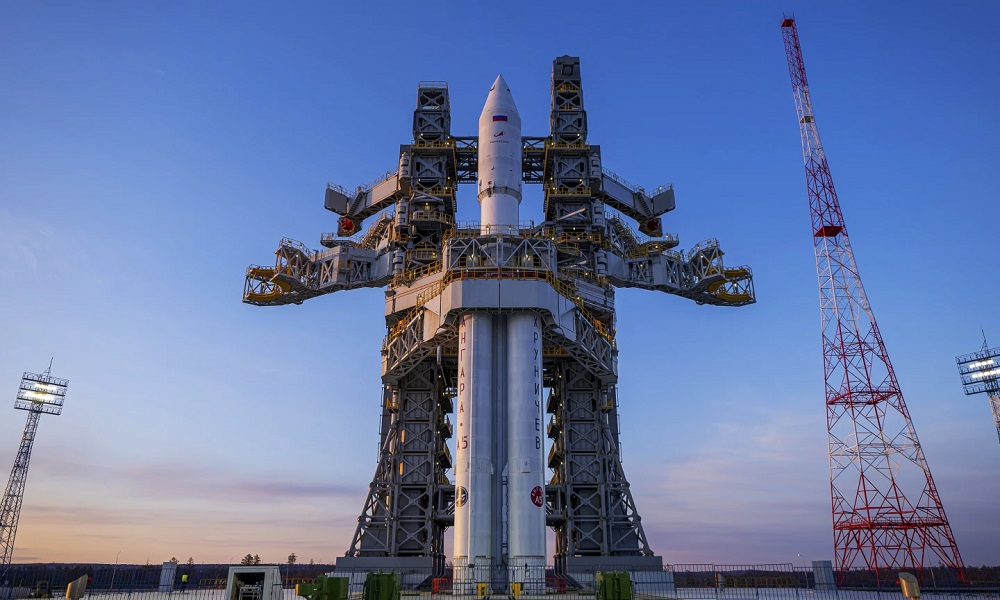
Russian space officials on Tuesday aborted the test launch of a new heavy-lift rocket from its far-eastern launch pad.
The Angara-A5 rocket was scheduled to lift off from the Vostochny space launch facility at 0900 GMT Tuesday, but the launch was aborted two minutes before, AP reported.
Yuri Borisov, head of Roscosmos state space corporation, said the automatic safety system canceled the launch after registering a flaw in the oxidizer tank pressurization system.
He said the next launch attempt was set for Wednesday.
Tuesday’s launch was to be the fourth for the Angara-A5, a heavy-lift version of the new Angara family of rockets that has been developed to replace the Soviet-designed Proton rockets.
-

 Latest News4 days ago
Latest News4 days agoRashid Khan named AWCC’s brand ambassador
-

 World4 days ago
World4 days agoMalaysian navy helicopters collide in mid-air, 10 killed
-

 Sport4 days ago
Sport4 days agoJaiswal ton powers Rajasthan to big IPL win
-

 World4 days ago
World4 days agoNorth Korea officials visit Iran in a rare public trip
-

 Latest News5 days ago
Latest News5 days agoAt least 1,500 families affected by recent floods: IRW
-

 Sport4 days ago
Sport4 days agoMawj Sahil player scores stunning halfway line goal in 1-0 win over Jawanan Wahedi
-

 Sport3 days ago
Sport3 days ago‘Serious talent’ Fraser-McGurk bonds with Warner to light up IPL
-

 Latest News4 days ago
Latest News4 days agoUS report cites ‘significant deterioration’ in Afghan women’s rights last year












